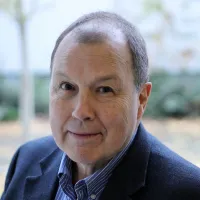
Biography
From 1975 to 1996 I worked for various engineering consulting organizations. My experience includes mining exploration, geotechnical engineering, mine design, design of tailings dams, water resources engineering and hydroelectric engineering. I worked on projects in Canada, the US, Central and South America, Iran, Africa, and China.
In January 1997, I joined the Department of Mining Engineering at the University of British Columbia. I taught courses in Mine Economics, Mine Waste Management, Mine Design, Simulation, and Professional Engineering Practice.
I was the founding director of the Integrated Engineering program, an undergraduate engineering program that focuses on the interdisciplinary nature of engineering practice, teamwork in design, independent learning, and communication skills.
From 2015 to 2024 I served as Head of the Department of Mining Engineering.
My research concerns the technical and business paradigm changes needed to deal with the many challenges the mining industry faces. In terms of technology for example, biological entities have been interacting with metals and minerals for billions of years and it makes sense to understand this “mineral microbiome” in order to find ways to enhance its ability to produce metals. But changes to the business model of the industry and the way it is organized could provide other opportunities for innovation, foster more collaboration between companies, governments, and communities, and encourage more participation of society in metal supply. This line of research is interesting because it addresses the questions of what a mining company is and how the industry will evolve.
Education
- Stanford University, 1977, PhD Geophysics and Civil Engineering
- University of Toronto, 1973, MSc Geophysics
- University of British Columbia, 1972, BSc Geophysics
Teaching
MINE 350/553 Modeling and Simulation
APSC 450 Professional Engineering Practice
MINE 396 Engineering Economics
MINE 515 Future of Mining
Selected Publications
- Gillis A, Dunbar WS, Steen J, Nordenflycht A, 2024. What causes mining asset impairments? Resources Policy, 90:104821
- Gillis A, Nordenflycht A, Steen J, Dunbar WS, 2023. What drives shareholder returns in mining companies? Resources Policy, 86:104217
- Mackay ML, Dunbar WS, Holuszko M & Ahmadi MG, 2023. North American Steelmaking Slags – A Source for Critical Elements. International Journal of Energy for a Clean Environment, 24(8):129–145.
- Dunbar WS, Fraser J, Reynolds A, Kunz NC, 2019. Mining needs new business models. The Extractive Industries and Society, 7:263-266
- Baatartogtokh B, Dunbar WS, van Zyl D, 2018. The state of outsourcing in the Canadian mining industry, Resources Policy, 59:184-191.
- Lederer FL, Curtis SB, Dunbar WS, MacGillivray RTA, 2017. Identification of lanthanum-selective peptides for future recycling of rare earth elements from compact fluorescent lamps. Biotechnology and Bioengineering, 114(5):1016-1024.
- Curtis SB, Lederer FL, Dunbar WS, MacGillivray RTA, 2017. Identification of mineral-binding peptides that discriminate between chalcopyrite and enargite. Biotechnology and Bioengineering, 114(5):998-1005.
- Dunbar WS, 2017. Biotechnology and the mine of tomorrow. Trends in Biotechnology, 35(1):79-89
- Grieco S-HH, Wong AYK, Dunbar WS, MacGillivray RTA, and Curtis SB, 2012. Optimization of fermentation parameters in phage production using response surface methodology, Journal of Industrial Microbiology & Biotechnology, 39(10): 1515-1522
- Curtis SB, Dunbar WS, MacGillivray RTA, 2012. Bacteriophage-induced aggregation of oil sands tailings, Biotechnology and Bioengineering, 110(3):803-811
- Gunson AJ, Klein B, Veiga M and Dunbar S, 2012. Reducing mine water requirements. Journal of Cleaner Production, 21:71-82
- Curtis SB, MacGillivray RTA, Dunbar WS, 2011. Effects of bacteriophage on the surface properties of chalcopyrite (CuFeS2), and phage-induced flocculation of chalcopyrite, glacial till, and oil sands tailings. Biotechnology and Bioengineering, 108(7): 1579-1590
- Grieco 5-HH, Lee S, Dunbar WS, MacGillivray RTA, and Curtis SB, 2009. Maximizing filamentous phage yield during computer-controlled fermentation. Bioprocess and Biosystems Engineering, 32:773-779 Curtis S, Hewlit J, MacGillivray RTA, and Dunbar WS, 2009. Biomining with bacteriophage: Selectivity of displayed peptides for naturally occurring sphalerite and chalcopyrite. Biotchnology and Bioengineering, 102:655-650